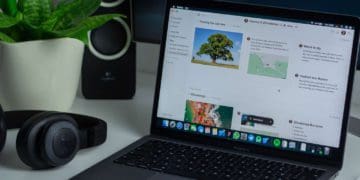The ability to access your MacBook remotely is not new. You could always log in remotely and access your Mac via Secure shell. There was also the option of using Back to my Mac service within the cloud. Following the release of macOS Sierra, Apple made things even simpler. Despite Apple continuing to remove random features with new versions of macOS, you can still access Mac remotely either using Apple’s built-in method or with the help of third-party apps.
Related Reading
Contents
How to Allow Remote Computer Access To Your Mac
If you want to go down the path of accessing your Mac remotely without downloading and installing third-party apps, you can actually do so thanks to tools built into macOS. However, this isn’t something that’s enabled by default when you set up a new Mac, as you’ll need to enable a few options and set things up first.
- Open the System Settings on your Mac.
- Click General in the sidebar on the left.
- On the right side of the System Settings pane, click Sharing.
- Click the toggles next to the following options to the On position.
- Remote Login
- Remote Management
- When prompted, enter your Mac’s administrator password to provide authentication.
- Click the Info (i) button next to Remote Login.
- If needed, click the checkbox next to Allow full disk access for remote users.
- Under the Allow access for section, select one of the following options:
- All users
- Only these users
- If choosing the “Only these users” option, click the + button.
- Select the user that you want to add.
- Once complete, click the Done button.
With Remote Login now enabled, you will be able to access your Mac using either SSH (Secure Shell Protocol) or SFTP (SSH File Transfer Protocol). Naturally, there are some limitations here, as you might not fully grasp how to use these native features built into macOS.
How to Access Mac Remotely From Another Computer
Once you have finished setting up the Remote Login and Remote Management features within macOS, you can now access Mac remotely from another computer. All you’ll need is the hostname, which is either an IP address or domain name, along with an SSH client on non-macOS computers or the Terminal app if you are using a different Mac to access your Mac remotely.
- From the computer that you are using to access Mac remotely, open the Terminal app or SSH client.
- Type the following SSH command:
- ssh [yourusername@hostname]
- Enter your password.
- Press Enter or Return on the keyboard.
Third-Party Apps To Access Mac Remotely
While it’s nice to have the ability to access Mac remotely without needing to download and install any other applications, these might not give you the experience that you’re looking for. Thankfully, there are a few third-party apps available that can get you logged in an using your Mac from another device, even your iPhone or iPad, with just a tap. Here are the ones that we would recommend checking out if you’re looking to access Mac remotely from another device.
Jump Desktop
Jump Desktop is a secure and reliable remote desktop app that lets you connect to any computer, anywhere in the world. With features built from the ground up to increase productivity, Jump is a must-have. The unique keyboard remapping feature lets you use Mac shortcuts on Windows and achieve maximum productivity during long remote desktop sessions. Live Previews help you keep an eye on all your machines. Jump is tightly integrated into macOS: Spotlight integration lets you launch connections quickly from anywhere. Advanced energy saver features ensures Jump has minimal impact on your Macbook’s battery while on the road. Use Tags to organize your machines. Open multiple connections inside the same window via Jump’s Tab support.
Chrome Remote Desktop
Chrome Remote Desktop allows users to access another computer through Chrome browser or a Chromebook remotely. Computers can be made available on a short-term basis for scenarios such as ad hoc remote support, or on a more long-term basis for remote access to your applications and files. All connections are fully secured. Chrome Remote Desktop is fully cross-platform. Provide remote assistance to Windows, Mac and Linux users, or access your Windows and Mac desktops anytime, from the Chrome browser on virtually any device, including Chromebooks.
VNC Connect and VNC Viewer
VNC Viewer from RealVNC gives you instant remote access to your Mac, Windows and Linux computers from anywhere in the world. You can view your computer’s desktop, and control its mouse and keyboard as though you were sitting down in front of it. Download VNC Connect to each computer you want to control. Then sign in to VNC Viewer on your device using your RealVNC account credentials. You’ll see your computers automatically appear; simply tap to connect.
Screens
Screens is a powerful VNC client app that lets you control any computer from anywhere as if you were sitting in front of it! Screens can connect to any Mac from the latest macOS version to the venerable OS X 10.4 Tiger. It can also connect to Windows PCs (Windows XP and later) and most Linux and Raspberry Pi distributions. Work on that spreadsheet you left at home, perform software updates on your server on another continent, or help your dad configure his computer miles away back in your hometown. Install Screens Connect, our free utility on your Mac or Windows PC and make it reachable from anywhere in the world.
Andrew Myrick is a freelance writer based on the East Coast of the US. He enjoys everything to do with technology, including tablets, smartphones, and everything in between. Perhaps his favorite past-time is having a never-ending supply of different keyboards and gaming handhelds that end up collecting more dust than the consoles that are being emulated.










Write a Comment